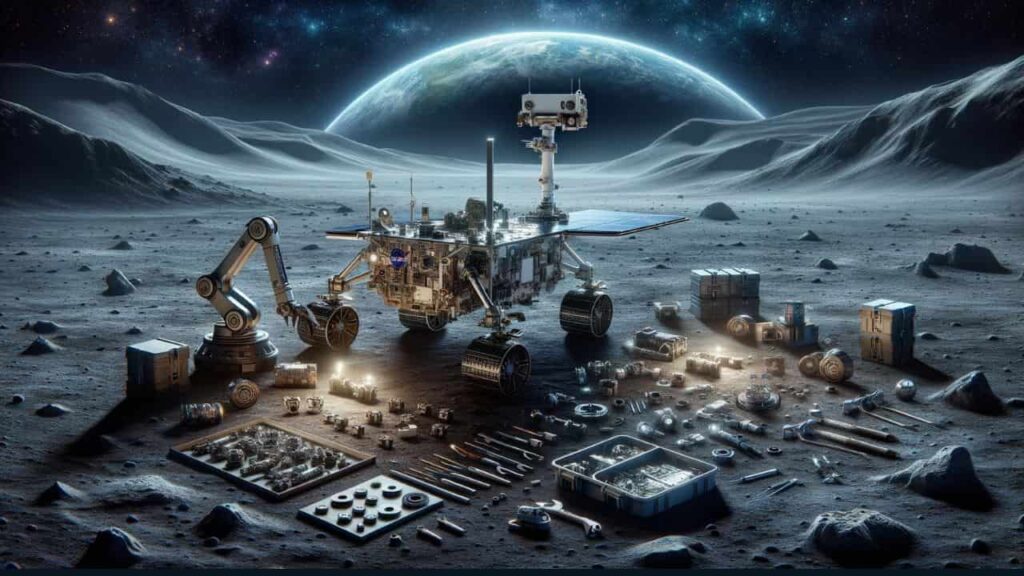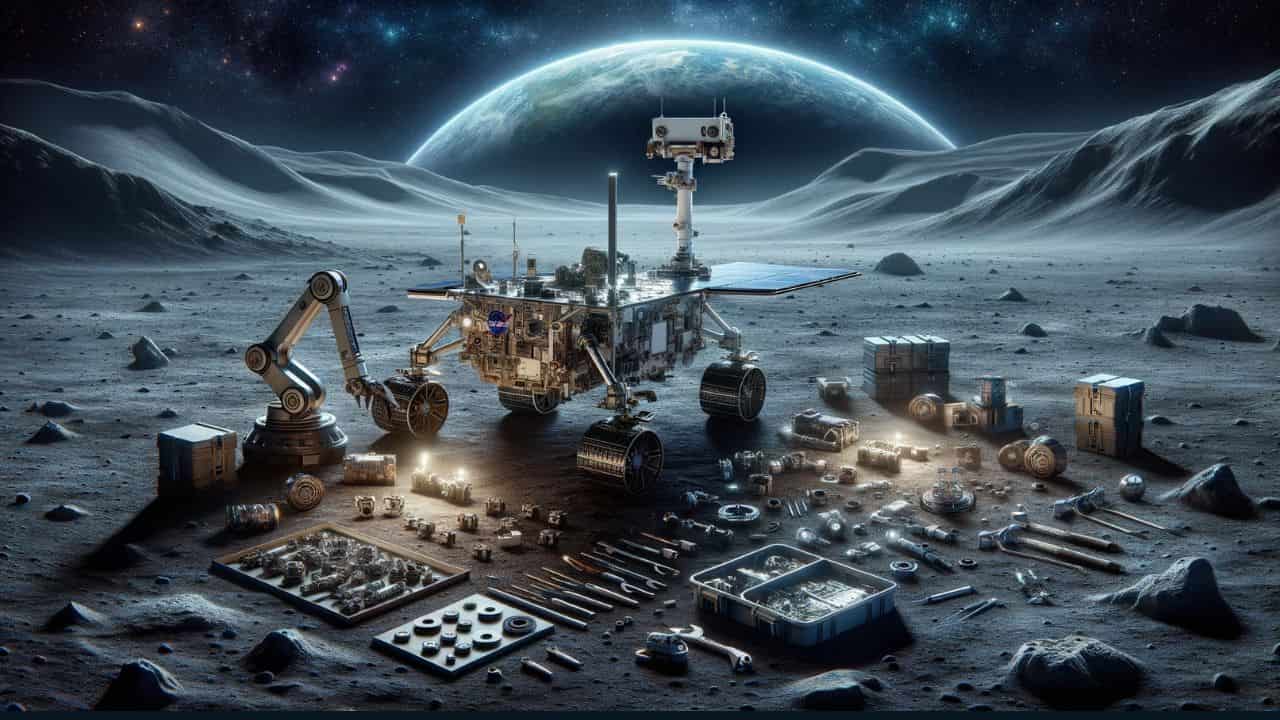NASA, VIPER Project, Moon Exploration, Lunar Resources, Astrobotic, Griffin Mission One, CLPS, Polar Resources Ice Mining Experiment, Lunar Terrain Vehicle, Artemis Missions, Space Exploration
NASA has announced the discontinuation of its VIPER project due to cost increases and delays. Despite this, the agency continues its commitment to lunar exploration through alternative missions and technological advancements. Learn more about the future of NASA’s Moon missions and their innovative approach to discovering lunar resources.

NASA Ends VIPER Project, Continues Moon Exploration
NASA recently announced its decision to discontinue the VIPER (Volatiles Investigating Polar Exploration Rover) project following a comprehensive internal review. The decision is based on several factors, including increased costs, delays in the launch schedule, and the risks of future cost growth. This article will delve into the reasons behind this decision, its implications for NASA’s lunar exploration program, and the agency’s plans moving forward.
Reasons for Discontinuation
The VIPER project, initially set for a late 2023 launch, faced numerous challenges. In 2022, NASA requested a delay to late 2024 to allow more time for preflight testing of the Astrobotic lander. However, further schedule and supply chain delays pushed VIPER’s readiness date to September 2025. The Commercial Lunar Payload Services (CLPS) launch aboard Astrobotic’s Griffin lander was similarly delayed. Continuing the VIPER mission would have led to increased costs, potentially affecting other CLPS missions. Consequently, NASA decided to stand down on the mission and has informed Congress of its intent.
Official Statements
Nicola Fox, associate administrator of the Science Mission Directorate at NASA Headquarters in Washington, emphasized NASA’s commitment to lunar exploration. “We are committed to studying and exploring the Moon for the benefit of humanity through the CLPS program,” Fox stated. She added that NASA has an array of missions planned over the next five years to search for ice and other resources on the Moon. Fox assured that the agency would make maximum use of the technology and work invested in VIPER while preserving critical funds to support NASA’s robust lunar portfolio.
Reusing VIPER’s Components
NASA plans to disassemble and reuse VIPER’s instruments and components for future Moon missions. Before disassembly, NASA will consider expressions of interest from U.S. industry and international partners for using the existing VIPER rover system at no cost to the government. Interested parties should contact NASA by Aug. 1, with the project expected to conduct an orderly closeout through spring 2025.
Continued Efforts with Astrobotic
Astrobotic will proceed with its Griffin Mission One under its contract with NASA, aiming for a launch no earlier than fall 2025. Although the mission will not include VIPER, the landing will still provide a flight demonstration of the Griffin lander and its engines.
Alternative Approaches to VIPER’s Goals
NASA will pursue alternative methods to achieve many of VIPER’s objectives and verify the presence of ice at the lunar South Pole. One such effort is the Polar Resources Ice Mining Experiment-1 (PRIME-1), scheduled to land at the South Pole in the fourth quarter of 2024. PRIME-1 will search for water ice and demonstrate resource utilization using a drill and mass spectrometer to measure the volatile content of subsurface materials.
Additionally, future crewed missions, such as those involving the Lunar Terrain Vehicle, will allow for mobile observations of volatiles across the south polar region. These missions will also provide access for astronauts to the Moon’s permanently shadowed regions for dedicated sample return campaigns. NASA plans to use copies of three of VIPER’s four instruments on future Moon landings on separate flights.
The Vision for Lunar Exploration
The VIPER rover was designed to search Earth’s Moon for ice and other potential resources, supporting NASA’s broader commitment to lunar exploration. Despite the project’s discontinuation, NASA’s lunar initiatives, including the Artemis human missions and CLPS, continue to explore more of the Moon than ever before. These efforts involve highly trained astronauts, advanced robotics, U.S. commercial providers, and international partners.
NASA’s decision to end the VIPER project marks a significant shift in its approach to lunar exploration. While the rover will not be part of upcoming missions, the technology and insights gained from VIPER’s development will continue to benefit NASA’s lunar ambitions. The agency remains dedicated to unraveling the Moon’s mysteries and leveraging its resources for the benefit of humanity.
In summary, NASA’s decision to discontinue the VIPER project underscores the challenges and complexities of space exploration. The agency’s focus now shifts to alternative methods and missions that can achieve similar goals, ensuring that the quest to explore and utilize lunar resources continues unabated. The lessons learned from VIPER will inform future missions, contributing to the overall success of NASA’s lunar exploration program.
Read More
- NASA Hubble Unveils Strong Evidence for Intermediate-Mass Black Hole in Omega Centauri
- Joe Engle: NASA Astronaut and US Air Force Pilot Who Made History
- How Climate Change is Shifting Earths Rotation: Insights from NASA Studies
- NASA Issues Alert: Gigantic Asteroid 2024 NF to Pass Near Earth at 73,000 KMPH – Potential Impact?










